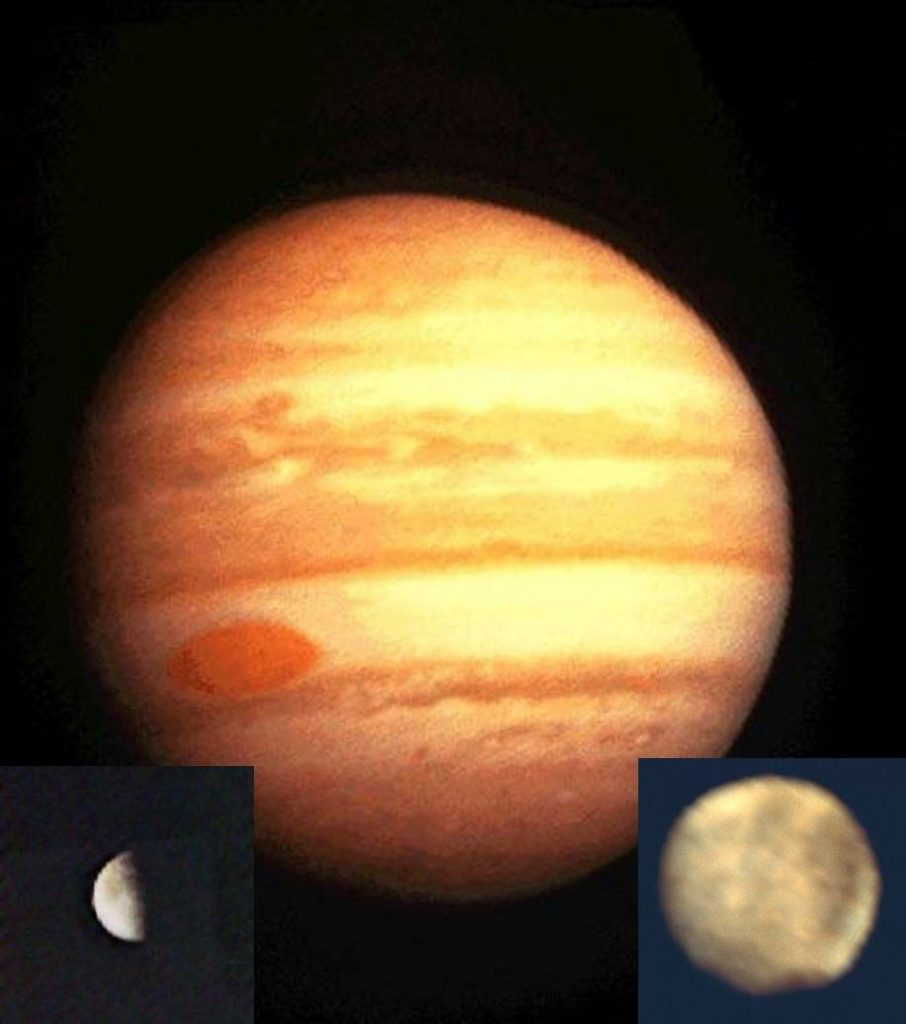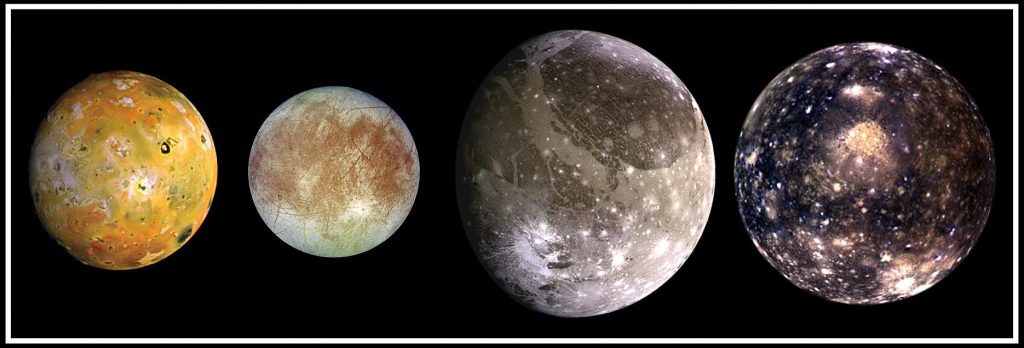On April 14, 2023, the European Space Agency launches the Jupiter Icy Moons Explorer (JUICE) research mission to
JUICE won't be the first exploratorya vehicle that will approach the gas giant: eight interplanetary stations have approached Jupiter in the past, and NASA's Juno probe is exploring the planet right now. Some of them used the gas giant only as an intermediate "stop" in order to use its gravity to get acceleration and enter a given orbit to reach the far outskirts of the solar system and beyond. Others purposefully studied the planet itself and its many satellites.
Fleeting wanderers flying into the distance and their discoveries
Two twin spacecraft designed by NASAPioneer 10 and Pioneer 11 became the first artificial vehicles that went beyond the asteroid belt and approached the largest planet in the solar system. Although the missions started about a year apart and followed different trajectories, together they accomplished a number of historic feats.
Pioneer 10 was launched on March 2, 1972 withambitious mission to study the asteroid belt, Jupiter's atmosphere and the outer solar system. About a year and a half after launch, it reached Jupiter. At its closest approach on December 4, 1973, it flew at a distance of 132,000 km from the clouds of Jupiter.
"Pioneer-10" took the first detailed picturesclose-up of the gas giant and made observations of its radiation belts, magnetic field and much more. Having completed its main mission, the probe headed towards the star Aldebaran, which it is expected to reach in about 2 million years.
Launched about a year after itsits predecessor, Pioneer 11, flew through the asteroid belt in 1974. He needed the help of Jupiter's gravity to reach Saturn: on December 2, the interplanetary station passed at a distance of about 42.8 thousand km from the edge of the planet's clouds. As a result of this part of the mission, he took pictures of the polar regions of Jupiter and its moons.
 Artistic illustration of the Pioneer-10 and Pioneer-11 probes. Image: NASA Ames
Artistic illustration of the Pioneer-10 and Pioneer-11 probes. Image: NASA Ames
 Images of Jupiter and the two largest moons of Europa (left) and Ganymede (right) taken by the Pioneer 10 spacecraft. Image: NASA
Images of Jupiter and the two largest moons of Europa (left) and Ganymede (right) taken by the Pioneer 10 spacecraft. Image: NASA
The next "tourists" who visited the gasgiant, became two probes-"twins" "Voyagers". Voyager 2 launched on August 20, 1977, followed by Voyager 1 two weeks later. The latter overtook its "twin", flew past Jupiter in March 1979 and took more than 18 thousand pictures of the gas giant and its satellites. The second probe, which reached Jupiter four months later, allowed researchers to compare how the face of the planet is changing.
Among other things, the Voyagers showed for the first time that the Great Red Spot is a counterclockwise rotating storm that interacted with other, smaller storms.In addition, the satellites discovered a faint ring of dust surrounding the planet and several previously unknown moons, discovered active volcanoes on Io, and revealed for the first time linear faults on Europa's surface — the first sign of a hidden ocean.


Images of Jupiter and the Great Red Spot taken by the Voyagers. Photos: NASA
In 1992, a spacecraft flew past Jupiter.apparatus "Ulysses". The main mission of this satellite was to study the Sun. But to go beyond the plane of the ecliptic (the plane in which the planets move) and view the polar regions of the star, the probe also used the gravity of the largest planet. During a flyby of the planet, satellite instruments managed to measure and refine the shape and size of Jupiter's magnetosphere.
The Cassini-Huygens probe is a joint NASA project,The European and Italian Space Agencies - is best known for his exploration of Saturn: for more than 10 years he circled the planet's orbit. But on the way to the research site, this device also managed to study Jupiter. The interplanetary station's high-resolution cameras took 26,000 images of Jupiter's atmosphere over several months of flyby. These photographs have helped scientists rethink their understanding of the red and white bands of gas around the planet.
 An image of Jupiter taken by the Cassini probe. Photo: NASA/JPL/Space Science Institute
An image of Jupiter taken by the Cassini probe. Photo: NASA/JPL/Space Science Institute
The last probe to fly past Jupiter was"New Horizons". A visit to the gas giant in 2007 was an important part of the spacecraft's mission, as the planet's gravity should have helped steer it towards Pluto. During the five-month flyby, New Horizons refined orbit calculations for Jupiter's inner moons and took the first close-up photographs of the Little Red Spot for the first time.
Galileo is the first to orbit Jupiter
Four spacecraft (the Pioneers and the Voyagers) have visited Jupiter, but Galileo was the first probe to purposefully enter the gas giant's orbit.It launched on October 18, 1989 and reached the largest planet in December 1995.
While in orbit, Galileo dropped atmosphericthe probe that first sampled the atmosphere of a gas planet. He measured temperature, pressure, chemical composition, characteristics of clouds, studied sunlight, lightning and the internal energy of the planet. In its 58 minutes of operation, the probe penetrated 200 km into Jupiter's turbulent atmosphere before being crushed, melted or vaporized due to intense pressure and temperature.
 Artistic illustration of the Galileo flying past the volcanic surface of Io. Image: NASA
Artistic illustration of the Galileo flying past the volcanic surface of Io. Image: NASA
By chance, it was Galileo for the first timeobserved a comet impacting a planet when Shoemaker-Levy 9 collided with Jupiter. In addition, for 14 years of work in the orbit of the planet, the spacecraft discovered an intense radiation belt above Jupiter's cloud tops, helium in approximately the same concentration as on the Sun, the presence of a salty ocean under the surface of Europa, and also collected data on the iron core and magnetic field on Ganymede.
September 21, 2003, when Galileo almostran out of fuel, NASA deliberately sent the spacecraft on a suicide "landing". The probe burned up in Jupiter's atmosphere to protect Europa, in whose oceans scientists believe life may be hiding.
 The four largest moons of Jupiter photographed by Galileo (from left to right, in order of increasing distance fromplanets): Io, Europa, Ganymede, Callisto.Image: NASA/JPL/DLR
The four largest moons of Jupiter photographed by Galileo (from left to right, in order of increasing distance fromplanets): Io, Europa, Ganymede, Callisto.Image: NASA/JPL/DLR
Juno explores the depths of the atmosphere
The Juno mission is only the second spacecraft dedicated to the study of the largest planet in the solar system.It was launched by NASA on August 5, 2011, arrived at Jupiter in July 2016, and is stillcontinues to work.
The main goal of Juno is to learn more aboutthe origin of Jupiter and how the planet changes over time. During its stay on Jupiter, the automatic station looked into the depths of the gas giant's atmosphere. Violent storms on the planet seem more chaotic and unstoppable than previously thought: for example, the spacecraft detected a cluster of cyclones and anticyclones at Jupiter's north pole, some larger than Earth.
 Combined image based on data,collected by Juno in infrared, which shows the central cyclone at the planet's north pole and eight surrounding cyclones. Image: NASA/JPL-Caltech/SwRI/ASI/INAF/JIRAM
Combined image based on data,collected by Juno in infrared, which shows the central cyclone at the planet's north pole and eight surrounding cyclones. Image: NASA/JPL-Caltech/SwRI/ASI/INAF/JIRAM
Although Juno cannot observe Jupiter's coredirectly, the spacecraft provided scientists with evidence that the planet's core is larger and "fuzzier" than previously thought. The researchers believe that the gas giant has a "fuzzy" core rather than a small, solid center.
Juno also detected several types of lightningon Jupiter, giving scientists new insights into the planet's atmosphere. The conclusions drawn from the collected data suggest that the weather on Jupiter is, in some cases, radically different from Earth's. For example, on our planet, most of the lightning comes from water clouds. But Juno has found that at least one type of lightning forms high in Jupiter's atmosphere, where temperatures are too cold for water. Perhaps they arise due to the collision of ice crystals and ammonia.
 A section of Jupiter's near-equatorial region (the poles are not visible, they are on the left and right) obtained by Juno.Image: NASA/JPL-Caltech/SwRI/MSSS/Kevin M.Gill
A section of Jupiter's near-equatorial region (the poles are not visible, they are on the left and right) obtained by Juno.Image: NASA/JPL-Caltech/SwRI/MSSS/Kevin M.Gill
Juno's original mission ended in 2021, but NASA extended it until 2025.During this time, the spacecraft explores Ganymede, Europa and Io more closely.
JUICE is the first probe in orbit around a satellite
Despite numerous studies, many questions about Jupiter and its moons remain unanswered, especially those concerning the possibility of life in the oceans hidden under the ice. Perhaps JUICE will be able toanswer some of them.
The probe's journey to Jupiter will last 7.5 years and will include three returns to Earth: the spacecraft willuse the gravity of our planet and one flyby of Venus to correct the trajectory and enter orbit around the gas giant in December 2031.
According to the plan, he will spend three years in orbit of the planet,making close flybys of its three main satellites: Europa, Ganymede and Callisto. After that, it will go into orbit around the largest satellite of Ganymede, becoming the first artificial device to orbit a satellite other than the Moon.
JUICE will make only two flybys of Europe, flyingat a distance of about 400 km above the surface of the satellite. It is too close to Jupiter for spacecraft to stay here for very long. After that, it will perform 21 flybys of the outermost of the four main moons, Callisto, approaching a distance of 200 km from its surface. The mission will end with a stable orbit around Ganymede.
Artistic animation of JUICE in orbit of Ganymede. Video: ESA
JUICE is equipped with 10 scientific instruments that will help scientists analyze Jupiter's moons and their potential for life.Among them are cameras, sensors to analyze the chemical composition of the icy crust of moons and their environment, magnetometers and radars that will createdetailed maps of the surface of the satellites and look under them for the first time.
The mission was to be launched from the spaceport duringFrench Guiana April 13, 2023 at 15:15 Moscow time. But due to weather conditions, the start was postponed by one day: the second attempt is scheduled for April 14 at 15:14. ESA will start live streaming the launch at 14:45.
Read more:
Scientists have studied an ultra-bright object that violates the law of physics
"Sea" of quarks inside one proton: what does an elementary particle consist of
Look at the highest resolution map of Mars: 110,000 frames and 5.7 trillion pixels
On the cover:artistic illustration of the JUICE mission. Image: ESA/ATG medialab (spacecraft); NASA/ESA/J. Nichols (Jupiter); NASA/JPL (Ganymede); NASA/JPL/University of Arizona (Io); NASA/JPL/DLR (Callisto and Europe)
Update 04/13/2023: new launch date indicated